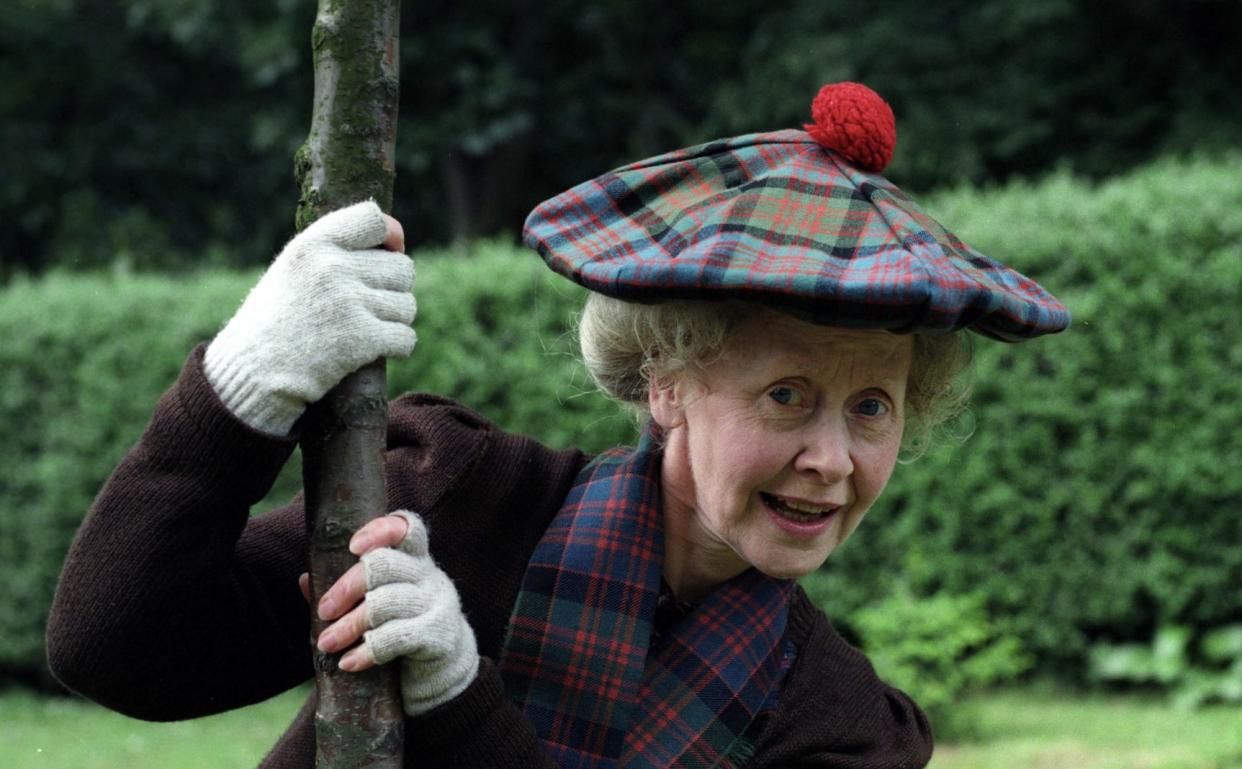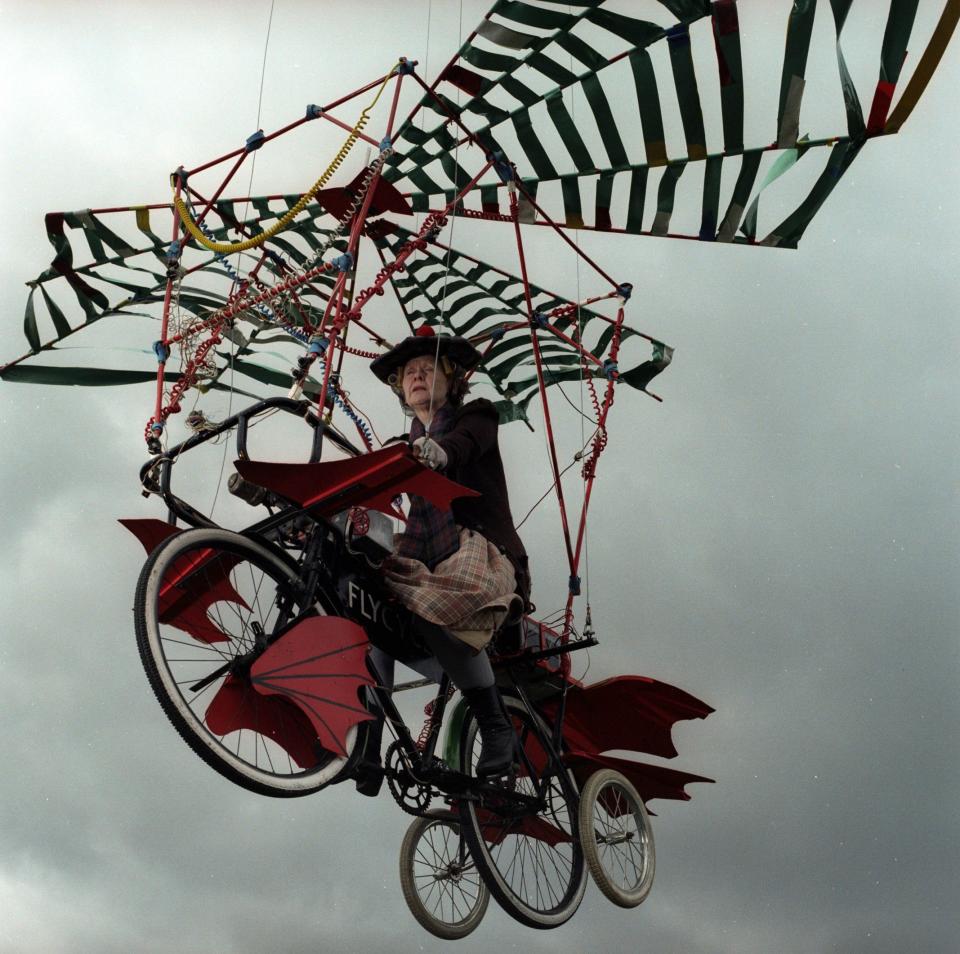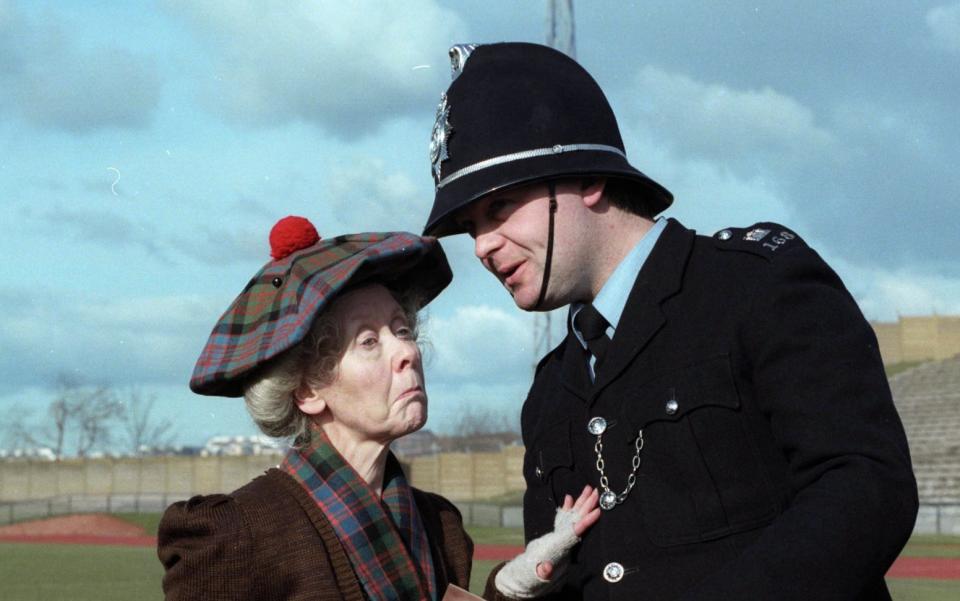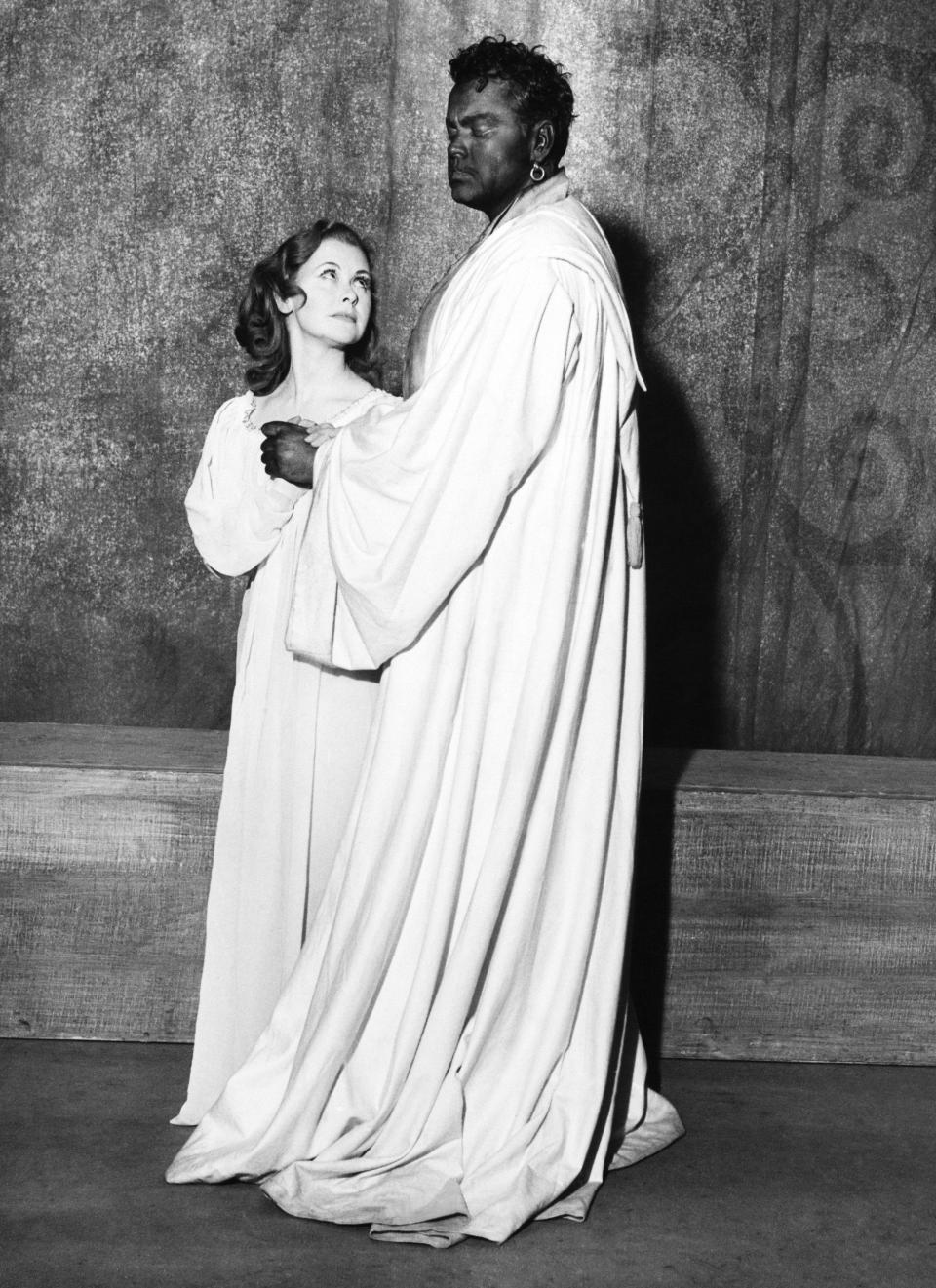Gudrun Ure, actress who found fame on children’s television as flying heroine Super Gran – obituary

- Oops!Something went wrong.Please try again later.
- Oops!Something went wrong.Please try again later.
- Oops!Something went wrong.Please try again later.
- Oops!Something went wrong.Please try again later.
Gudrun Ure, who has died aged 98, made her West End debut as Desdemona to Orson Welles’s Othello in his 1951 staging of Shakespeare’s tragedy; she was better known, however, as the grandmother with superpowers in the 1980s ITV children’s fantasy series Super Gran, based on Forrest Wilson’s books illustrated by David McKee.
A diminutive strawberry blonde with candid blue eyes, Gudrun Ure was approaching 60, with two grandsons of her own, when Tyne Tees Television chose her as the unlikely heroine. Clad in a tartan skirt and wearing an enormous tam o’shanter, the kindly Granny Smith is accidentally struck by a beam from a magic-ray machine, which gives her superpowers. She uses them to protect the residents of Chiselton from various villains including Scunner Campbell, played by the actress’s lifelong friend Iain Cuthbertson.
The show, promoted at the time as “the most expensive children’s series ever” – though the special effects were fairly rudimentary – was filmed in and around Whitley Bay and Tynemouth. To avoid boredom, Gudrun Ure undertook many of her own stunts. Once she was five feet off the ground, she said, the rest was easy: “It doesn’t matter if you are 100 or 150 feet up… you are going to break your neck anyway.”

It was an energetic assignment, riding her “Flycycle” or flying bicycle (adapted from a butcher’s bike), hanging on to a helicopter as it takes off and cruising through the waves on a motor-powered surfboard. “I had four interviews for the job, but no one ever said I’d have to jump off buildings, go skateboarding – and play football,” she told the Bristol Evening Post in 1990.
Guests on the show included the footballer George Best, the strongman Geoff Capes, the comedian Spike Milligan and the actor Roy Kinnear. Gary Glitter, the now disgraced rock singer, made an appearance as the pop star Newcastle Brown.
In one episode the singer Lulu won a crazy bathing-beauty contest, while in another Billy Connolly played an eccentric, bagpipe-playing millionaire who falls hopelessly in love with Super Gran. Connolly also wrote and performed the theme tune, which was released as a single, reaching No 32 in the charts. It ended with the line: “Is there nothing that she cannae do?”
On one occasion during filming, Gudrun Ure was walking about in her Super Gran outfit, covered by an anorak to keep out the cold, when a homeless man stopped her and asked if she was OK. “He thought I was a tramp too,” she recalled with a laugh.

Gudrun Ure was born in Milton of Campsie, then in Stirlingshire, on March 12 1926, the oldest of three children of Allan Forbes Ure, an iron founder, and his wife Lily; her cousin was the actress Mary Ure. She began appearing with Iain Cuthbertson in radio dramas for Children’s Hour while a pupil at Laurel Bank School in Glasgow. During the war her first job was with a Scottish children’s theatre company, a reserved occupation that was, she said, “better than making guns”.
After a “brief and agonising career as a school teacher” she appeared with the Citizens Theatre in Glasgow and the Perth Rep, before venturing “abroad” to England, where she spent two seasons at the Old Vic in Bristol. After Gudrun had her big break as Lady Teazle in Sheridan’s The School for Scandal, a local newspaper critic declared: “There should be no doubts now of her future on the stage.”
Her debut at St James’s Theatre, London, was accompanied by a fanfare of Moorish trumpets, while the black-faced Welles wore four-inch lifts to his heels. She recalled him consuming a bottle of brandy a day, having a massage between shows and drinking champagne during the intervals. After being almost strangled by him eight times a week for 12 weeks, she took an extended break, declaring: “Orson is the most exhausting and exhilarating man I have ever encountered on stage.”

While Welles had wanted her to be billed as Gudrun Muir, she was credited as Ann Gudrun in the film noir 36 Hours, with Dan Duryea (1953) and in the Pinewood comedy The Million Pound Note (1954), with Gregory Peck, who called her “Peaches”. She also appeared with Donald Sinden and Dirk Bogarde in Doctor in the House (1954). After a career largely in radio drama she returned to television, appearing in Midsomer Murders and Casualty among other prime-time staples.
Gudrun Ure, who was popular for her personal appearances as Super Gran, was clear-eyed about show business, describing it as a heartbreaking and cruel world in which actors are mere pawns and “everything is controlled by people whose only talent appears to be in board meetings.”
In 1964 she married John Ramsay, a Scottish garage owner who died in 2008. She is survived by a stepson.
Gudrun Ure, born March 12 1926, died May 14 2024

